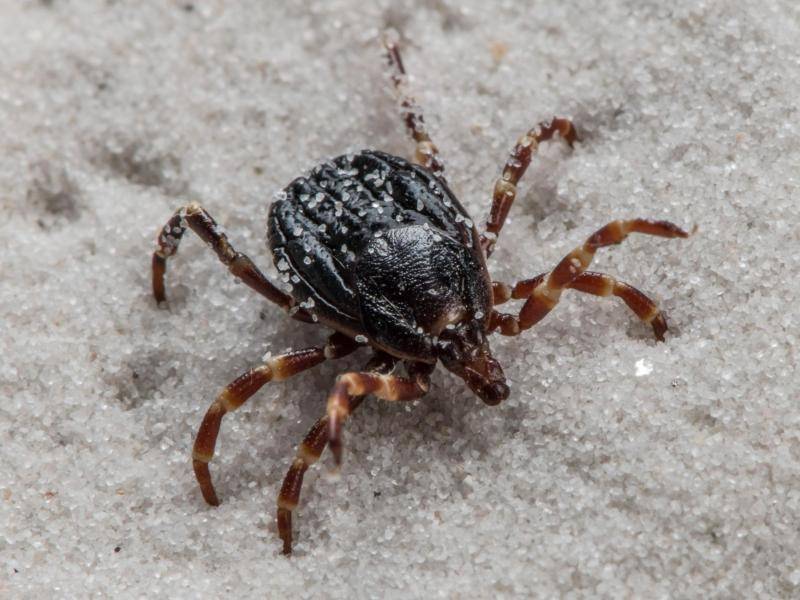Carrier of dangerous pathogens Tropical giant tick winters in Germany for the first time
STUTTGART · Usually the large tick is transported to Europe by migratory birds. But now the Hyalomma tick seems to feel so comfortable that it has wintered in Germany for the first time. And perhaps not for the last time.
They are much bigger than the ticks known here, they can sense people and follow for dozens of meters. Now Hyalomma ticks from Africa and Southern Europe have wintered in Germany for the first time.
The University of Hohenheim (Stuttgart) and the Munich Institute for Microbiology of the German Armed Forces announced on Tuesday that six of the spider-like giant ticks had appeared following the recent hot days. Five were found on a horse farm in the Lower Rhine region and one on a horse in Lower Saxony.
"According to the first findings this year, we must assume that these insects were able to survive the winter in Germany," said the Hohenheim parasitologist and tick expert Ute Mackenstedt. However, hibernation does not necessarily mean that the ticks, which belong to the mite family, have already become native.
The Hyalomma ticks come from the dry and semi-dry regions of Africa, Asia and Southern Europe - from Spain to Italy and Turkey. They can easily be distinguished from local ticks such as the common wooden buck: Up to two centimeters long, they are considerably larger and have striped legs.
So far, Hyalomma ticks have been transported to Germany by migratory birds, and scientists believe they could become more widespread here this year. This year's findings were reported very early. "If we calculate the development cycle backwards, they would have had to be introduced at a time when migratory birds were not even here yet.
Hyalomma ticks can transmit dangerous diseases, including the virus that causes Crimean-Congo fever, which can be accompanied by severe bleeding. According to the Robert Koch Institute (Berlin), Hyalomma ticks have also been detected in Germany since 2017. Last year, a total of 19 specimens were found in eight German states (Bavaria, Baden-Württemberg, Hesse, Rhineland-Palatinate, North Rhine-Westphalia, Brandenburg, Berlin and Schleswig-Holstein). According to the Institute, none of these ticks carried infectious agents such as the Crimean-Congo virus.
In 2018, two species of the genus Hyalomma were recorded in Germany: H. marginatum and H. rufipes. So far, the species has not been determined for all of the newly discovered ticks.
In any case, the so-called Holzbock remains dominant as the native tick species, as Mackenstedt said. The pathogens transmitted by it can cause borreliosis and TBE (early summer meningoencephalitis). While the normal ticks are not easy to spot as soon as they cling to the human body, humans feel the attack of the Hyalomma tick, says expert Mackenstedt: "It is much bigger. You'll notice when it's crawling around on you.”
(Orig. text: dpa, Translation: ck)


